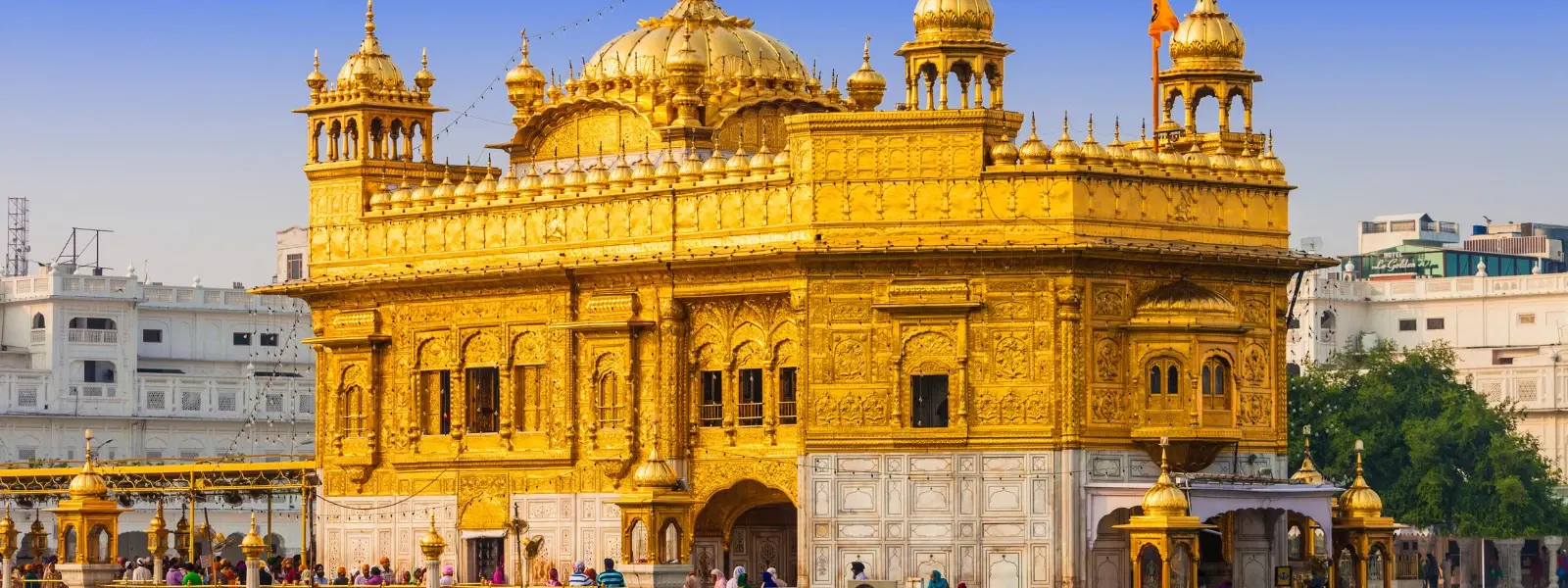
Hotels
•04 min read

Imagine standing before a shimmering golden sanctuary surrounded by a tranquil pool. This sacred water body has been a spiritual haven for centuries. The Golden Temple, located in Amritsar, India, showcases not only stunning architecture but a rich spiritual heritage. In this post, we explore the holy lake of the Golden Temple, known as the Amrit Sarovar. You will learn ten fascinating facts about its history, significance, and cultural impact.
The term Amrit Sarovar means the "Pool of Nectar." In Sikhism, this pool symbolizes the nectar of immortality. Devotees see it as a place for spiritual cleansing and deep meditation. Many believe that a dip in this Golden Temple sacred pool renews the spirit and cleanses the soul.
This lake has strong ties to Sikh teachings. It was created under the guidance of Guru Ram Das, the fourth Sikh Guru. Stories pass down that his vision brought the city of Amritsar into being. His teachings continue to inspire many who visit the Golden Temple pilgrimage site in Amritsar. They see the structure, its water body, and the surrounding site as a blend of physical beauty and spiritual wisdom.
The Golden Temple and its lake originate from the 16th century. Sikh leaders of the time worked together to build this holy place. The creation of the Golden Temple Amritsar location was a milestone for Sikh heritage. The lake was designed to host the sacred water that nourished the faith and traditions of its people.
Throughout its history, the Golden Temple and the Amrit Sarovar have withstood many challenges. During Mughal invasions, the temple and its surroundings suffered damage. Yet, the community revived and rebuilt the site with care. Generations have worked tirelessly to maintain the sanctity of this spiritual lake of Golden Temple. These efforts show the deep respect for tradition and the values of purity and unity that the site represents.

The design of the lake is both unique and inspired. The water body is rectangular with marble-lined edges. Steps lead gracefully into the water. This careful design allows pilgrims to approach the water easily. The lake not only enhances the beauty of the temple but also provides a calm environment for reflection. The arrangement perfectly complements the mix of Mughal and Hindu architectural styles seen at the Golden Temple Sarovar.
The layout of the temple in the center of the lake carries deep symbolism. It represents the ideals of equality and inclusivity. The lapis lake surrounding the temple visually reinforces how every person, regardless of their background, is welcomed. The placement reminds visitors that the search for truth and inner peace is a journey open to all, which adds to the importance of this holy lake of Golden Temple.
Pilgrims have many rituals associated with the lake. Many bathe in the Amrit Sarovar as a form of cleansing. Devotees also gather here to recite prayers and hymns. These rituals create a strong sense of community. They remind every visitor of the power of faith and tradition. Whether you are a devout believer or a curious traveler, the experience is unforgettable.
The Golden Temple is known for its warm welcome to all. People from every faith journey here seeking peace. The lake encapsulates this inclusive spirit. Visitors see the calm water as a symbol of unity and spiritual connection. It is common to find visitors sharing moments of reflection and gratitude. The Golden Temple water body stands as evidence of cultural harmony and inclusive belief.
Insight Corner: "Did You Know?"
The Amrit Sarovar is more than just a physical pool. It is seen as the spiritual nectar that feeds the soul. Sikh teachings often emphasize that immersing oneself in this serene pool is like cleansing the inner self. This simple act can help open the heart to limitless possibilities and new beginnings.
Consider these compelling points about the Amrit Sarovar:
1. The lake is called the Amrit Sarovar, meaning "Pool of Nectar."
2. It was constructed under the guidance of Guru Ram Das in the late 16th century.
3. Many pilgrims believe that bathing here pardons past grievances and cleanses the soul.
4. The lake is carefully maintained to uphold its pure state.
5. Surrounded by the majestic Golden Temple, the lake offers a serene ambiance.
6. It plays a vital role in Sikh ceremonies and daily prayers.
7. The site welcomes people of all faiths, promoting unity.
8. Marble steps provide easy access to the sacred waters.
9. During special events, the temple and lake glow with special illumination.
10. The city of Amritsar derives its name from the life-giving Amrit Sarovar.

The Golden Temple is surrounded by a sacred pool called the Amrit Sarovar.
The holy lake is known as the Amrit Sarovar, meaning "Pool of Nectar."
The temple is situated in the city of Amritsar in the Punjab region of India.
The water is part of the Amrit Sarovar, a sacred pool cherished by pilgrims for its purity and healing properties.
It is the sacred water body that encircles the Golden Temple, playing a key role in Sikh rituals and community gatherings.
The holy lake of the Golden Temple, the Amrit Sarovar, is more than a water body. It serves as a spiritual sanctuary that embodies Sikh values like equality, purity, and unity. Its historical legacy, architectural splendor, and cultural influence make it a must-visit destination for those in search of inner peace and enlightenment. As you explore the legacy of the Golden Temple and its serene lake, you will find that each visit deepens your understanding of spirituality and communal harmony.